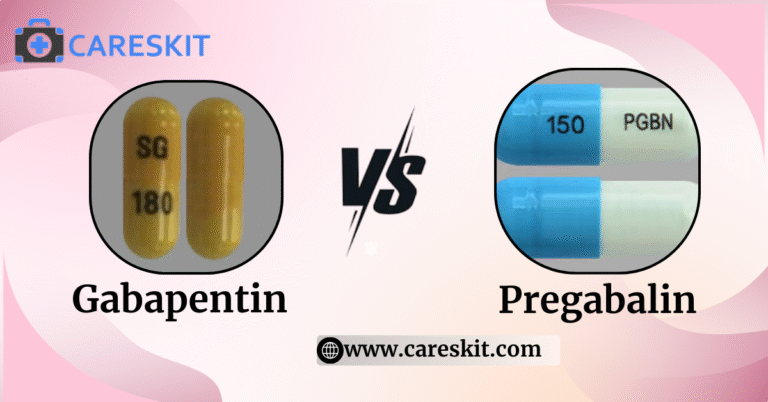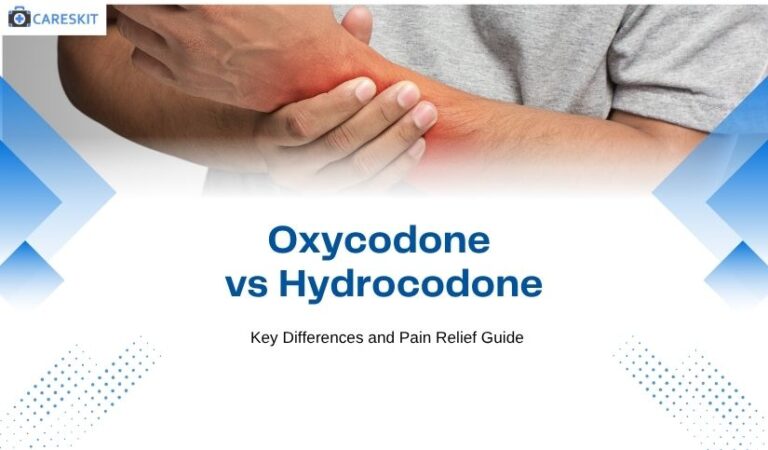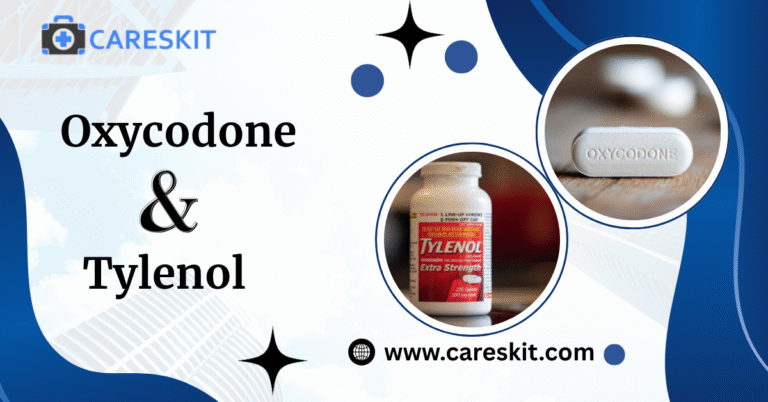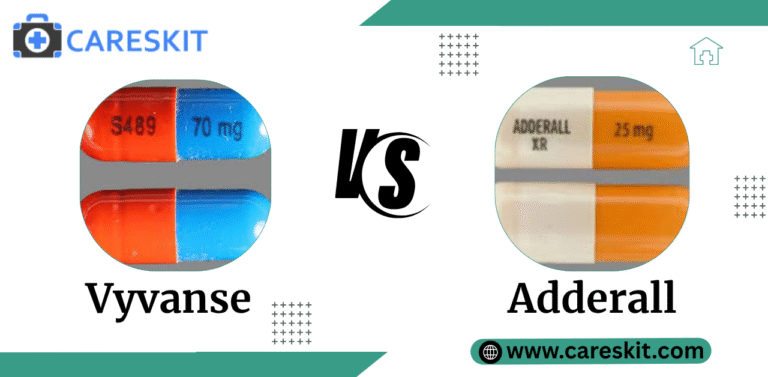Oxycodone vs Gabapentin for Pain: Which One Should You Take?
Oxycodone and Gabapentin are two distinct classes of drugs, but they are combined to produce relief from moderate to severe pain. Oxycodone is generally utilized to cure intense pain such as injury, surgery, and pain due to cancer, but Gabapentin is utilized for neuropathic pain. While taking measures for pain relief, the majority of medical practitioners choose the correct medication based on patients’ health conditions. When comparing Oxycodone vs Gabapentin, consider key factors such as dosage effectiveness, notable differences, and safety precautions.
In this article we will discuss Oxycodone vs Gabapentin for pain, side effects, drug interactions, which medication is better, Gabapentin vs Oxycodone, and can you take Gabapentin with Oxycodone. It is essential for both patients and healthcare professionals to evaluate which are the best medications for your health.
Understand Oxycodone and Gabapentin
Understanding Oxycodone and Gabapentin guides are essential for those individuals who suffer severe pain issues. Most doctors prescribe both medications together, but they have different mechanisms of action, and various purposes are used in medical treatment.
What is Oxycodone?
An Oxycodone is a semi-synthetic opioid medication available in both immediate-release and extended-release forms. It is a Schedule II controlled drug because it contains addictive and dependence properties. Oxycodone produces its effect by binding the opioid receptors within the spinal cord and brain, and reducing the pain messages. It is primarily prescribed to the majority of Healthcare providers for postoperative pain, injury-related pain, and pain due to cancer according to patients’ demands. It is marketed under OxyContin, Roxicodone, and Percocet.
What is Gabapentin and Its Mechanisms?
Gabapentin is a type of anticonvulsant drug known as GABA analog and is available as a tablet, oral solution, or a capsule. It is approved by the FDA for seizure, nerve pain, and some time anxiety treatment. It works by changing the way the nerve sends pain signals and provides relief from neuropathic pain. Due to its addiction and misuse properties it has adverse potential side effects or even death.
Differences
When managing pain, healthcare providers often consider a variety of medications used to better treat patients. These differences can make it easy to understand both patient and doctor for taking appropriate decisions for choosing best medications to relieve pain. Some of major differences are:
- Oxycodone is a semi-synthetic powerful drug that is used to treat acute to chronic pain and start their work within 10 to 20 minutes.While Gabapentin is commonly prescribed for the treatment of nerve pain and sometimes anxiety by start their work within 30 to 40 minutes.
- According to the mechanism, Oxycodone starts their work by binding the opioid receptors in the barin and spinal cord and blocking the pain signals, whereas Gabapentin works by changing the calcium channels in the nervous system and decreasing pain signals.
- Oxycodone is classified as a controlled substance due to high potential for abuse, addiction, and dependence but Gabapentin has lower potential for abuse.
- Oxycodone acts quickly, best suited for immediate pain relief in patients, but Gabapentin takes longer time to take effect and is best suited for long-term users.
Oxycodone and Gabapentin Drug Interaction
When Gabapentin and Oxycodone are working together, they may enhance the risks of central nervous system depression. Drug interaction may be life-threatening for elderly people, children or those who intake alcohol.
Drug interaction of Oxycodone:
- CNS depressants
- MAO Inhibitors
- Serotonergic Drugs (SSRIs, Tramadol)
- Anticholinergic Drugs
Common Drug Interactions With Gabapentin:
- CNS Depressants
- Antacids
- Opioids
Can You Take Oxycodone and Gabapentin Together?
You can take both medications together, if it is prescribed by your healthcare provider. In some cases, most doctors prescribed both medications together to reduce the effect of chronic pain. However, combining these drugs may increase the risk of some serious side effects such as
- Dizziness
- CNS depression
- Drug interactions and overdose
- Nausea
Side Effects of Oxycodone and Gabapentin
Oxycodone or Gabapentin both drugs are used for relieving pain, but they differ in their working principle and potential side effects. Both medicines are addictive, while used in daily or long-term use.
Side Effects Of Oxycodone
Oxycodone produces some common and serious side effects due to the risk of misuse, dependence, and addiction. Some common side effects are:
- Drowsiness
- Nausea
- Constipation
- Dry mouth
- Dizziness
- Headache
- Sweating
Some Serious side effects of Oxycodone are:
- Respiratory depression
- Low blood pressure
- Confusion or mental clouding
- Dependence
- Addiction
- Seizures
- Allergic reactions
Side Effects Of Gabapentin
Gabapentin has both common and serious side effects due to low potential for abuse. So before using this drug first consult your healthcare provider for better treatment. Some common side effects are:
- Dizziness
- Drowsiness
- Weight gain
- Swelling in hands or feet
- Blurred eyes
- Tremors
- Lack of coordination
Serious side effects of Gabapentin are:
- Mood changes
- Allergic reactions
- Difficulty breathing
- Anxiety Disorders
FAQs
Can you take Oxycodone and Gabapentin at the same time?
Sometimes both Oxycodone and Gabapentin are prescribed together for patients to relieve from acute pain (through Oxycodone) to nerve pain (through Gabapentin) that can be decided by your healthcare provider according to your health conditions. This combination provides highly effective pain relief from post-surgical pain or cancer-related pain.
Is Oxycodone or Gabapentin stronger?
Both drugs have potential effects for pain relief but Oxycodone is considered stronger based on its working mechanisms. The selection of both drugs might rely on a person’s medical conditions, reason for pain, and weight.
Which is better, Gabapentin or Oxycodone?
It varies depending on the type and origin of pain to be cured – Gabapentin is more suited for neuropathic long-term pain, while Oxycodone is more suited for short-term intense pain. Both drugs should be consumed under the guidance of a doctor and based on the condition of the patient.
Conclusion
Oxycodone vs Gabapentin is important to understand in order to make proper decisions for both the patient and the doctor based on medical conditions. Both medications provide potential effects to reducing pain, but work differently. Always consult a good or certified healthcare provider before taking these medications and discuss which medication is appropriate for your health conditions.





